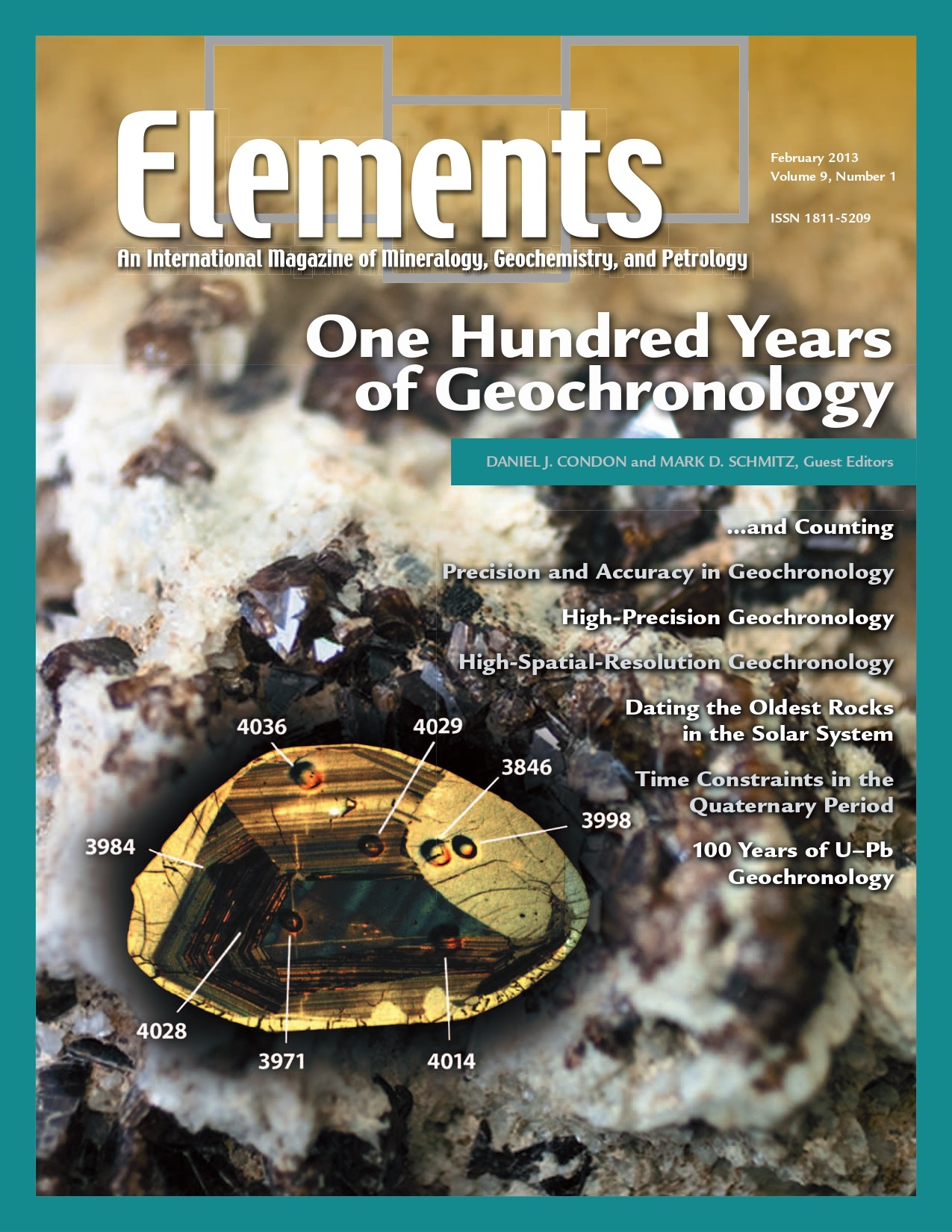
Granitic Pegmatites, August 2012, Vol. 8, No. 4
June 28, 2024
Kaolin, June 2014, Vol. 10, No. 3
June 28, 2024One Hundred Years Of Isotope Geochronology, February 2013, Vol. 9, No. 1
$20.00
In 1913, Frederick Soddy’s research on the fundamentals of radioactivity led to the discovery of “isotopes.” That same year, Arthur Holmes published his now famous booklet The Age of the Earth.
One Hundred Years Of Isotope Geochronology
February 2013, Vol. 9, No. 1
In 1913, Frederick Soddy’s research on the fundamentals of radioactivity led to the discovery of “isotopes.” That same year, Arthur Holmes published his now famous booklet The Age of the Earth. Combined, these two landmark events established the field of science we know as “isotope geochronology.” Today, isotope geochronology underpins much of our knowledge of the absolute age of minerals and rocks, and the records they contain. This field is constantly evolving, reflecting and responding to scientific drivers that require more highly resolved timescales, the microscopic analysis of smaller zoned minerals, or the generation of robust data sets in novel materials. This series of articles provides perspectives on the state of the art in the field of radioisotope dating—from the challenges of dating the Solar System’s oldest materials to resolving the record of Quaternary climate change, and the four and a half billion years in between.
Why You’ll Love Elements Magazine:
- Expert Contributors: Articles written by renowned researchers in the field of geoscience.
- Engaging Content: Join a community of readers who are passionate about Elements.
- Exceptional Quality: Each issue is printed on high-quality paper with stunning visuals and detailed illustrations that bring complex scientific concepts to life.
Order your copy of the February 2013 issue of Elements magazine today and learn about one hundred years of isotope geochronology.
Related products
-
Carbon Dioxide Sequestration, October 2008, Vol. 4, No. 5
$20.00Storage of carbon in the subsurface involves introduction of supercritical CO2 into rock formations beneath the surface of the Earth, typically at depths of 1000 to 4000 meters. Although CO2 is a relatively benign substance, the volume being considered is large.
-
Diamonds, March 2005, Vol. 1, No. 2
$20.00Diamond, the fascinating ultrahard mineral, is the focus of considerable interest and scientific research. Recent advances particularly relevant to geoscientists include: diamond as a recorder of Earth processes from the perspective of inclusions, chemistry, and conditions of formation; synthesis for research applications and processing to modify color and physical properties, important to diamond gems and anvils; the implications of nanodiamonds from meteorites.
-
Zircon – Tiny But Timely, February 2007, Vol. 3, No. 1
$20.00Where would Earth science be without zircon? As Earth’s timekeeper, zircon has proven to be a remarkable and versatile mineral, providing insights into deep time and ancient Earth processes. However, there is still much to learn about Earth’s history from zircon and its behaviour.




